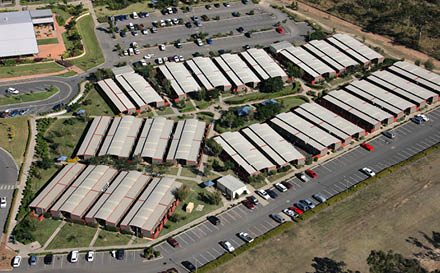06/May/2010
PUBLICATION: Australia's Mining Monthly
JOURNALIST: Noel Dyson
After dodging the worst of the financial furies, an accommodation specialist is ready to start expanding its property portfolio.
The Pilbara and the Hunter Valley look like becoming the next frontiers for The MAC Services Group. In the past month, the accommodation specialist was named the preferred proponent to develop land at Gap Ridge, Karratha, in Western Australia, and purchased a development site in Muswellbrook, New South Wales.
The Karratha site covers 12 hectares and will give The MAC access to the lucrative oil and gas market too. Its submission to the WA Department of Regional Development envisaged a 1180-room facility with associated recreation facilities.
The MAC could have the final terms for the purchase of the land finalised by the time this issue of Australia’s Mining Monthly hits the streets.
In NSW the company bought a development site covering 10 hectares that already has development approval for a 240-room village. Negotiations are underway with potential anchor tenants for the site.
Besides those sites, the company also has land in the Queensland centres of Gladstone and Wandoan – both with development approvals. It also has an option over a second site in Moranbah.
The MAC has made its fortune by identifying and buying suitable land near mining projects, building an accommodation village and the relevant support infrastructure on it, and then managing it. The mining companies enter into contracts with The MAC to house workers there.
To create its one-stop-shop approach, The MAC set up subsidiary companies such as The MAC Accommodation, The MAC Development and The MAC Linen Services. Maloney said this allowed the company to control the quality of its offerings.
As chief executive officer Mark Maloney explains, the mining companies are left free to concentrate on running a mine while his company takes care of housing the mine’s workers.
He said the company would assess where the projects were going and look for suitable land in a town nearby.

The company looks for sites with sustainable, ongoing demand from long-life, low-cost mines close to towns.
The sites also have to be suitable for long-term expansion, with access to utility services and simple boundary geometry. They must also not be prone to flooding.
All buildings in The MAC Villages are manufactured at The MAC’s Adelaide facility, which has the capacity to produce 5000 rooms a year.
“We probably start [developing the site] soon after the projects get the final investment decision,” Maloney said.
That way the village is in place for the construction workforce and then the operational workers as the project goes into production.
“By having our own construction arm we can make sure we can deliver the villages on time,” he said.
The MAC has six villages in operation. Five of them are in the Bowen Basin coal fields. The sixth, in Kambalda, WA, marked the company’s first site away from Queensland. Maloney said the company also looked to site its villages in or near towns. That way, he said, the village inhabitants could become part of the communities they lived in.
The five Queensland villages are in Nebo, Middlemount, Moranbah, Dysart and Coppabella.
Maloney said at 15 years old, Nebo was the company’s oldest village. That village is undergoing a makeover with some rooms being completely replaced and a new gymnasium being installed.
The MAC was one of the first to start providing resort-style rooms in accommodation villages. Indeed, the company differentiates itself on that point with “in words” such as villa, village, guests and Zest Eatery replacing term such as donga, camp, miners, wet mess and crib.
Looking at The MAC Services Group’s financial results it seems the global financial crisis was but a hiccup. The financial fires that swept the world might have slowed the group’s plans a bit but when other companies were reporting revenue falls, The MAC posted increases.
Renovations aside, the company has a strong development pipeline ahead of it. “We’re concentrated on the key five or six mining hotspots in Australia”, Maloney said. “It all comes down to dealing with blue chip companies with long-life projects and low-cost assets”.
Maloney said the company had a strong history in coal but also was looking at iron ore and oil and gas with its Pilbara property.